
Supplied Connectors
- Hardwired Cables:
- One 50cm 20+4-pin ATX cable
- One 55cm 4+4-pin EPS12V cable
- One 55cm 8-pin EPS12V cable
- One PCI-Express cable with an 8-pin and 6-pin connector at 50cm and 65cm respectively
Modular Cables:
- Three 50cm 6-pin PCI-Express cables
- Three 50cm 8-pin PCI-Express cables
- Two SATA power cables with four connectors at 50cm, 65cm, 80cm and 95cm respectively
- Two Molex power cables with four connectors at 50cm, 65cm, 80cm and 95cm respectively with a floppy power connector at 110cm.
- Three 20cm 8-pin to 6-pin PCI-Express adapters
In theory you could support four graphics cards that require both 8-pin and 6-pin power so if Foxconn ever releases its Ultra ATX Quantum Force boards, this PSU will be ready for it. If it wasn’t clear enough already that Thermaltake is seriously weighting this on the graphics side of things (it’s ever present at LAN parties and in the gaming sector) it’s no wonder that all these modular cables feature ferrite cores to reduce cross-interference.
In this respect, even though compared to Enermax’s support for eighteen SATA drives on its 1,000W Galaxy, the eight on the 1,500W Thermaltake looks a little glum, we can almost forgive it. After all, eighteen is, let’s say, quite excessive. All Molex, SATA and floppy power connectors are coloured black to match the cables, and the Molex connectors even get push-release functionality, which is always useful.
As you’d expect, Thermaltake caters to Skulltrail and other dual processor workstation boards that require two 8-pin EPS 12V connectors, although they’re both hardwired into the PSU – so most people will be left with one cable dangling about. There’s another odd cable too: the solid 8-pin PCI-Express connector has a 6-pin waggling off the end about like a tail: this is not exactly the best approach, ganging one high power connector to the other.
While this unit needed to be modular otherwise you’d have cables coming out of every orifice; all you’d need is a Japanese schoolgirl and you’d have the plotline to many Anime, it disappoints us that all the cables are the same length – there’s no choice for best fit. In addition, we can’t understand why Thermaltake insisted on deliberately blocking off the PCI-Express 8-pin connectors, forcing the use of ugly and unnecessarily long 8- to 6-pin adapters. Surely a simple 6+2-pin would be far neater?
The braiding itself quite high quality and tight fitting, and Thermaltake has uses glue instead of zip ties to hold the heatshrink on the ends – zip ties compress the cables and make them heat up more under heavy use. This results in higher resistance and poorer voltages or inefficiency, but the effect is dependent on the quality of cable used though.
Sadly, Thermaltake doesn’t take the braid right into the PSU and instead it’s tied off on the outside making it look ugly. Just like the Toughpower Q-Fan 650W, Thermaltake’s cable choice is less than perfect and while it works, there are some strange choices in its design.

MSI MPG Velox 100R Chassis Review
October 14 2021 | 15:04

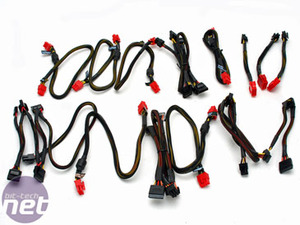
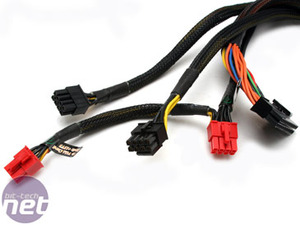
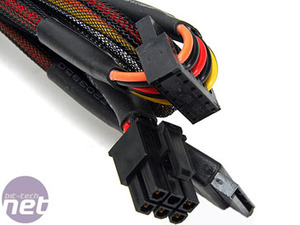
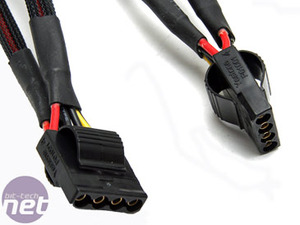
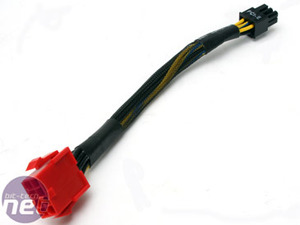








Want to comment? Please log in.